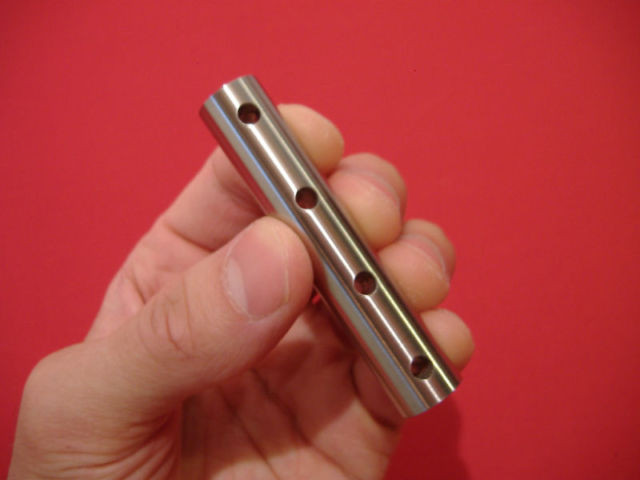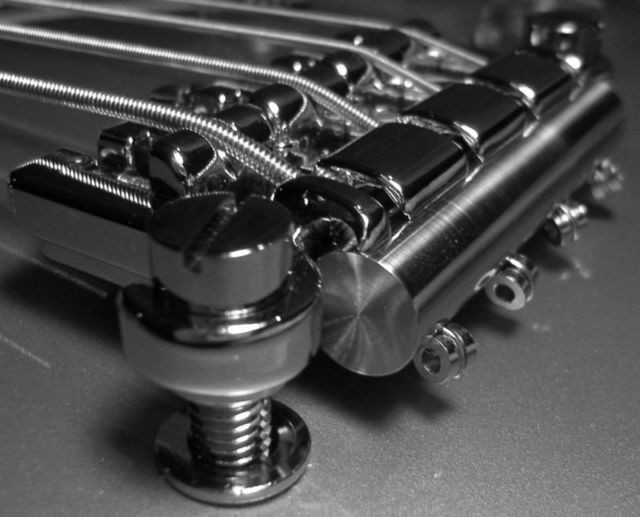The Epiphone EB-0 bass guitar has become a popular choice for bassists seeking a straightforward, easy-to-play instrument with a vintage vibe. For players transitioning from guitar or those with smaller hands, the EB-0’s short scale and slim neck offer enhanced comfort and playability. After spending some time with the Epiphone EB-0, and even taking it out for its first gig, here are my experiences and thoughts on this unique bass.
Initially drawn to its simplicity, the Epiphone EB-0 boasts a single passive pickup and just two control knobs – volume and tone. This minimalist approach puts the focus squarely on the raw sound of the instrument and the player’s technique, allowing for tone shaping at the amplifier or through pedals. The appeal of a no-frills bass that fits a smaller frame is undeniable, but setting up the EB-0 straight out of the box presented some unexpected challenges.
Navigating the Setup of an Epiphone EB-0 Bass
Having adjusted numerous guitars and basses in the past, I initially attempted to set up the Epiphone EB-0 myself. However, this proved to be more complex than anticipated, leading to the recommendation that professional setup is advisable for this model. A modest investment of $60 at a local luthier, Alex Allgood of Milwaukee Lutherie, proved invaluable in getting the EB-0 playing optimally.
Understanding the Truss Rod System
The first hurdle was the truss rod. Unlike standard truss rods I was familiar with, the Epiphone EB-0 features a dual-action truss rod. This type of truss rod can be more nuanced to adjust, and a misstep can lead to further issues. While the bass included an allen key and basic instructions, the intricacies of a dual-action system are not immediately intuitive. For those unfamiliar, resources like YouTube videos explaining dual-action truss rods can be helpful, but seeking professional assistance is a safer bet, especially for beginners.
Adjusting String Height and Action
Setting the string height, or action, also presented a learning curve. My usual action settings, typically around 4/64th for the E and G strings and 5/64 for the A and D strings, resulted in significant fret buzz on the EB-0. This is largely due to the unique 3-Point Bridge design on the Epiphone EB-0, which differs significantly from standard bass bridges where each string’s height is adjusted individually.
The 3-Point Bridge adjusts string height by using two screws on either side of the bridge, affecting all strings simultaneously. While seemingly simpler, finding the optimal balance to eliminate fret buzz without raising the action too high required some experimentation. Ultimately, consulting recommended action settings specifically for the Epiphone EB-0 was necessary. Interestingly, while the recommended settings felt higher than my usual preference, the shorter scale of the EB-0 and the resulting looser string tension made the slightly higher action surprisingly comfortable and playable.
Recommended Action at the 12th Fret for Epiphone EB-0
| Treble Side | Bass Side |
|---|---|
| 5/64 inches | 7/64 inches |
Nut and String Considerations
Another adjustment stemmed from a personal preference for flatwound strings. The Epiphone EB-0 comes stock with light gauge round wound strings. Switching to thicker gauge flatwound strings meant the strings didn’t seat properly in the nut grooves, necessitating further adjustments best left to a professional to ensure proper string spacing and prevent buzzing or string binding.
Intonation Challenges and Solutions
A common point of contention among Epiphone EB-0 owners is the 3-Point Bridge’s perceived difficulty in achieving accurate intonation. Some players report an inability to intonate correctly, and concerns about string threads at the ball end resting over the saddles, potentially affecting tone and sustain. Many opt for a complete bridge replacement, often upgrading to the Hipshot SuperTone Gibson Bass Replacement Bridge.
However, a more budget-friendly and less drastic solution involves using a Gibson/Epiphone Bass Bridge Mod-Bar, available from eBay and other online retailers. This Mod-Bar effectively addresses the issue of string threads over the saddles. In my case, even with the Mod-Bar, further adjustments were needed for the 3rd and 4th strings. Utilizing small square beads, typically included with Labella flatwound strings to identify each string, and placing them at the ball end of the strings allowed the string threading to sit behind the saddles, resolving the intonation issue.
-
 Gibson/Epiphone Bass Bridge Mod-Bar
Gibson/Epiphone Bass Bridge Mod-Bar -
 Gibson/Epiphone Bass Bridge Mod-Bar Installed
Gibson/Epiphone Bass Bridge Mod-Bar Installed
Hardware and Personal Modifications
Beyond the bridge, personalizing the EB-0 often involves string and tuner upgrades. While the stock tuners are functional, they have a lower ratio, requiring a delicate touch for precise tuning. Upgrading to higher quality tuners, such as Hipshot tuning pegs, and potentially adding a Hipshot Bass Extender Key for drop tunings, are common modifications for improved tuning stability and versatility. Conversely, the stock strap retainers were surprisingly sturdy, and simple rubber washer strap locks proved sufficient.
The Strengths of the Epiphone EB-0 Bass
Despite the setup intricacies, the Epiphone EB-0 possesses several appealing qualities:
- Powerful Passive Pickup: The Fat Sidewinder humbucker pickup delivers a strong, warm tone without the need for batteries, contributing to the bass’s simple and direct nature.
- Simple Controls: The volume and tone knobs offer intuitive control, allowing players to focus on playing and shaping their sound through other means.
- Comfortable Neck and Short Scale: The slim neck, even thinner than a Jazz bass neck, and the 30.5″ short scale make the EB-0 exceptionally comfortable for players with smaller hands or those who prefer shorter reaches.
- Lightweight Design: Its lightweight construction is a boon for long gigs or players with physical limitations, making it easy to handle and transport.
- Sturdy Strap Buttons: The stock strap buttons are robust, providing confidence during performance.
- Easy String Height Adjustment (Once Understood): While initially confusing, the 3-Point Bridge simplifies overall string height adjustment once its mechanism is understood.
Areas for Improvement on the Epiphone EB-0
However, the EB-0 is not without its drawbacks:
- Complex Initial Setup: As detailed, achieving an optimal setup can be challenging and often requires professional intervention, potentially adding to the overall cost.
- 3-Point Bridge Intonation Limitations: The 3-Point Bridge design, while functional, is positioned in a way that can make accurate intonation difficult without modifications like the Mod-Bar.
- Lower Quality Tuners: The stock tuners’ low ratio demands extra care and finesse for accurate tuning, and are often considered a prime candidate for upgrades.
Minor Cosmetic and Practical Quirks
Some minor downsides include:
- Adhesive Residue: Removing the factory sticker from the pickguard can be surprisingly difficult and may lead to scratching if not done carefully.
- Bridge Material Susceptibility: The bridge material seems prone to denting or scratching with adjustments, which is a purely cosmetic issue but worth noting.
Final Verdict: The Epiphone EB-0 – A Bass with Character
 Jason with his Epiphone EB-0
Jason with his Epiphone EB-0
The Epiphone EB-0 bass guitar offers excellent value at its price point. While it may require some initial investment in professional setup and potentially a few upgrades to reach its full potential, the core instrument is fundamentally sound. Its comfortable short scale, powerful pickup, and straightforward controls make it a fun and inspiring bass to play. The setup process can be frustrating initially, but the reward is a unique-sounding and highly playable bass guitar. If you have experience with the Epiphone EB-0, please share your thoughts and experiences in the comments below!
